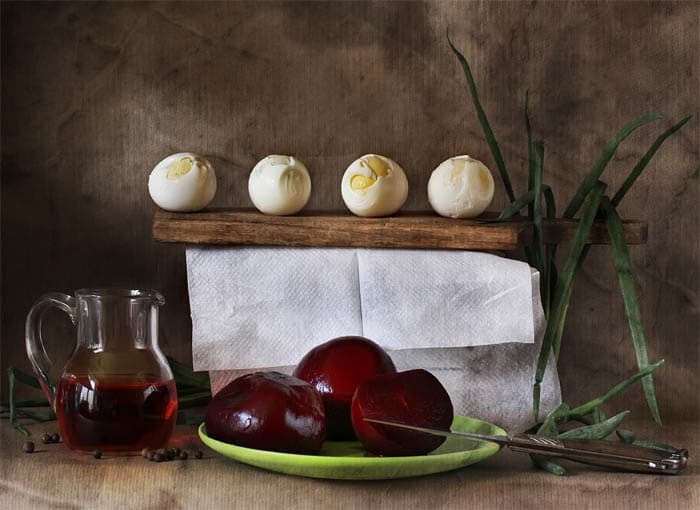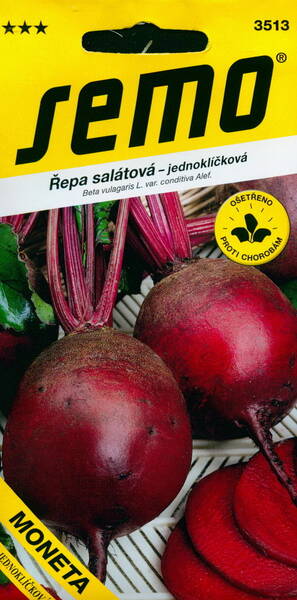Mid-early, single-germ variety. Root vegetables of excellent taste, with pulp without rings, cook well, and are suitable for juices, salads, first courses, stuffing, and canning. The root vegetable is round, smooth, red, with rich red juicy pulp.
It is valued for its stable yield, uniformity of root crops, cold resistance and good shelf life. Resistant to colour fade.

Agricultural technology: a sunny place is recommended for cultivation. Although this modest crop does not require much light to develop, the lack of light contributes to a sharp increase in nitrate levels. The soil should be rich in humus.
The distance between rows is 25 cm, between plants in a row - 5-10 cm. Sowing is carried out from the end of April to the end of June. Sowing depth - 1-2 cm; in summer - 3 cm.
For sowing in early April, it is necessary to use film or a greenhouse. It is possible, although less commonly practiced, to grow seedlings. At the end of March, sowing is done in pots, and in mid-May the plants are planted in open ground.
Fertilizer application: the main portion of organic fertilizers should be applied in the fall. However, fertilizers should not be overused, since excess nitrogen, as well as deficiency of light, increases the nitrate content in the root crop. Well-fertilized soil with compost does not require additional fertilizers.
Care: growing plants must be thinned out on time, at the latest at a height of 10 cm. During the ripening period, it is necessary to loosen the soil 2-3 times. Tubers should be hilled. Sufficient water supply is important for the normal development of tubers.
Harvesting: The smaller the mature tubers, the tastier they are. The optimal size is 6 cm in diameter. Ripe fruits should not be left in the ground for a long time, otherwise white rings will form in the tuber pulp. Because beets are susceptible to cold, they are usually harvested before early October. The leaves should be torn off carefully so as not to damage the tuber, which will lead to the loss of valuable juice. Red beets keep quite well.
Biological protection: not required.
* Culinary Tricks: for salads and vinaigrettes, it is better not to cook cleanly washed root vegetables, but bake them for 20-30 minutes in the oven, wrapped in several layers of foil.
The beets are considered ready when the peel wrinkles and is easily removed. To preserve the colour of beets in borscht, they are grated and stewed under a tightly closed lid, separately from other vegetables, in a small amount of water with the addition of vegetable oil.
You can do it differently: bake well-washed but unpeeled root vegetables, then peel, finely chop and put in borscht shortly before the end of cooking.
It is known that beets take a very long time to cook, but the cooking time can be reduced. To do this, root vegetables are poured with boiling water. After letting them simmer for one hour, remove from heat and keep for 10 minutes under running cold water.
Large root vegetables are placed on the fire for another 15-20 minutes, after which they are removed and cooled again.
Unlike other vegetables, beets are boiled in unsalted water, as otherwise they become less tasty and nutritious.
It is advisable to season boiled or baked beets with oil separately from other vegetables so that they are not stained by its juice.












